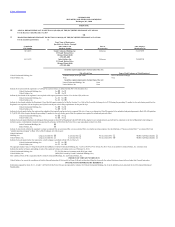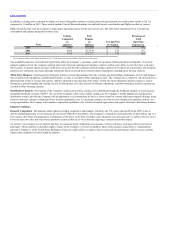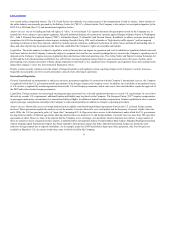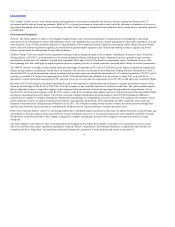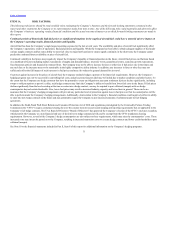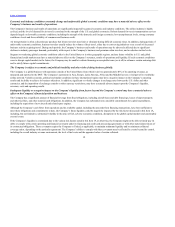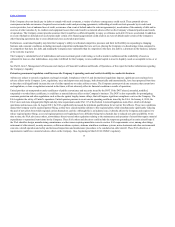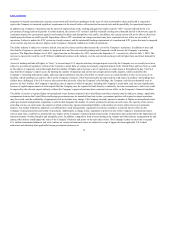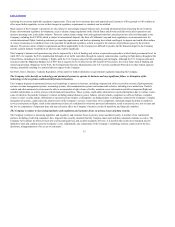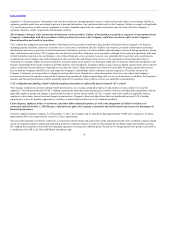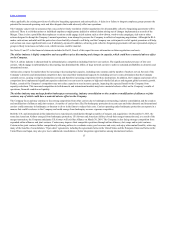United Airlines 2013 Annual Report Download - page 7
Download and view the complete annual report
Please find page 7 of the 2013 United Airlines annual report below. You can navigate through the pages in the report by either clicking on the pages listed below, or by using the keyword search tool below to find specific information within the annual report.
Table of Contents
Decisions on domestic pricing are based on intense competitive pressure exerted on the Company by other U.S. airlines. In order to remain competitive and
maintain passenger traffic levels, we often find it necessary to match competitors’ discounted fares. Since we compete in a dynamic marketplace, attempts to
generate additional revenue through increased fares oftentimes fail.
International Competition. Internationally, the Company competes not only with U.S. airlines, but also with foreign carriers. International competition has
increased and may increase in the future as a result of airline mergers and acquisitions, joint ventures, alliances, restructurings, liberalization of aviation
bilateral agreements and new or increased service by competitors. Competition on international routes is subject to varying degrees of governmental regulation.
The Company’s ability to compete successfully with non-U.S. carriers on international routes depends in part on its ability to generate traffic to and from the
entire United States via its integrated domestic route network and its ability to overcome business and operational challenges across its network worldwide.
Foreign carriers currently are prohibited by U.S. law from carrying local passengers between two points in the United States and the Company experiences
comparable restrictions in foreign countries except where “fifth freedom rights” have been negotiated between the U.S. government and other countries. In
addition, in the absence of open skies and fifth freedom rights, U.S. carriers are constrained from carrying passengers to points beyond designated
international gateway cities due to limitations in air service agreements and restrictions imposed unilaterally by foreign governments. To compensate partially
for these structural limitations, U.S. and foreign carriers have entered into alliances, joint ventures and marketing arrangements that enable these carriers to
exchange traffic between each other’s flights and route networks. See above, for further information.
Seasonality. The air travel business is subject to seasonal fluctuations. Historically, demand for air travel is higher in the second and third quarters, driving
higher revenues, than in the first and fourth quarters, which are periods of lower travel demand.
Domestic Regulation
All carriers engaged in air transportation in the United States are subject to regulation by the DOT. Absent an exemption, no air carrier may provide
air transportation of passengers or property without first being issued a DOT certificate of public convenience and necessity. The DOT also grants
international route authority, approves international codeshare arrangements, and regulates methods of competition. The DOT regulates consumer protection
and maintains jurisdiction over advertising, denied boarding compensation, tarmac delays, baggage liability and other areas, and may add additional
expensive regulatory burdens in the future. The DOT’s series of rules to enhance airline passenger protections have required U.S. air carriers to adopt
contingency plans and procedures for tarmac delays exceeding three hours for domestic flights and four hours for international flights and to charge the same
baggage fee throughout a passenger’s entire itinerary (even if on multiple carriers).
Airlines are also regulated by the Federal Aviation Administration (the “FAA”), an agency within the DOT, primarily in the areas of flight safety, air carrier
operations, and aircraft maintenance and airworthiness. The FAA issues air carrier operating certificates and aircraft airworthiness certificates, prescribes
maintenance procedures, oversees airport operations, and regulates pilot and other employee training. The 2011 FAA final rule amending existing flight, duty
and rest regulations applicable to U.S. air carriers under Part 117 of the Federal Aviation Regulations, which took effect on January 4, 2014, mandates
extensive changes to the way the Company schedules crews and deploys aircraft. From time to time, the FAA issues directives that require air carriers to
inspect or modify aircraft and other equipment, potentially causing the Company to incur substantial, unplanned expenses. The airline industry is also
subject to numerous other federal laws and regulations. The U.S. Department of Homeland Security has jurisdiction over virtually every aspect of civil
aviation security. Beginning in March 2014, the Occupation Safety and Health Administration (“OSHA”) will extend its regulatory programs for hazard
communication, hearing conservation and blood borne pathogens to areas of cabin crewmember safety and health. The Antitrust Division of the U.S.
Department of Justice (“DOJ”) has jurisdiction
7

